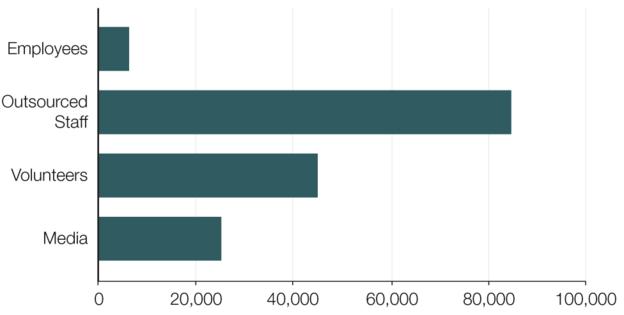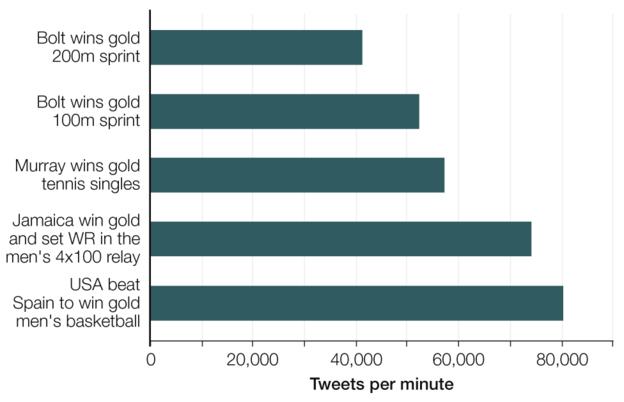Rio 2016: Key facts ahead of the Olympics
From 5 August Rio will welcome 206 countries to four venues to compete for 4,924 medals across 42 sports... all in just 17 days of action.
A fleet of 21 jumbo jets would be required to fly all 10,500 athletes out to Rio.
Also in attendance will be 315 horses - more than enough horses to fill a Grand National field seven times over.
About 140,000 people are needed to host the Games in August. Of those, 90,000 will be employees with a further 50,000 volunteers.

Rio hotel room prices have jumped from an average of £67 to £196 a night, with only 14% of official hotel rooms left available.
The most tweeted moments of London 2012:
There will be 32 tonnes of dead fish removed from the rowing and canoeing lagoon before the water-based activities take place. That's the equivalent of 70,548lbs of Brazilian fish stew, enough to feed 47,032 locals their favourite Moqueca dish.
In total, about 7.5 million tickets for the Rio Games will be on sale. By the end of April, 60% had been sold.
- How many seats are there on a jumbo jet?
- How many horses run in the Grand National?
- How does the number of media people compare to the number of volunteers?
- How many media people does each country send on average?
- Why is this not at likely to be the number sent by each country?
- What is the percentage price rise of a hotel room?
- Usain Bolt ran in the winning 4x100m relay team. If you combine the tweets involving Bolt, how does this compare to the basketball final?
- Why might there have been more tweets about Andy Murray than about the USA basketball team?
- 1 ton = 2000 lbs. 1 tonne = 0.98 ton. What percentage of the weight of fish stew is fish?
- How much fish stew does a Brazilian eat in one go?
- How many tickets were left at the start of May?
- I know that there are gold, silver, bronze medals for each event. Why is it a surprise to read that there are 4,924 medals?
- What is wrong with the numbers about the fish stew?
Answers:
- The story claims there are 524 seats on a standard 747. Using the figures in the article you might assume there are 500 seats. At 524 seats per plane, on 20 planes you would get 10,480 - leaving just 20 athletes in the final plane!
- 315/7 = 45. You could nearly stage 8 races, because there are actually 40 horses in the race.
- Just over half as many.
- It looks as if there are about 25,000 media representatives. Divide this by 206 countries and you get 121. (Better probably to do 25000/200 to give about 125.)
- Presumably small countries won't send as many people. I assume that many of the events will be filmed by only the official Olympic broadcaster and the footage shared among everyone.
- £196/£67 = 2.93, which is 293% of the previous cost. There has therefore been a 193% rise.
- 40,000 + 50,000 + 75,000 = 165,000 (figures are approximate), compared to 80,000. This is just over twice as much.
- The previous Olympics were in London, so people might have tweeted more about Murray's other matches. It also says that the graph shows the number of tweets per minute. We don't know which event prompted the most tweets overall.
- 32 tonnes = 31.36 tons = 62720 lbs. 62720 lbs / 70,548lbs = 0.889 This means each pound of stew requires 0.89 pounds of fish (but presumably some parts are thrown away (bones?).
- 70,548lbs / 47,032 = 1.5
- 40% of 7.5 million is 3 million.
- 4,924 is not divisible by 3. Some events (such as boxing) have 1 gold, 1 silver and 2 bronze medals.
- They are over-accurate. The figure for the amount of fish is given as 32 tonnes - this will be an estimate and has clearly been rounded. The number of people the fish stew would feed has been given to 5 significant figures!
Source:










